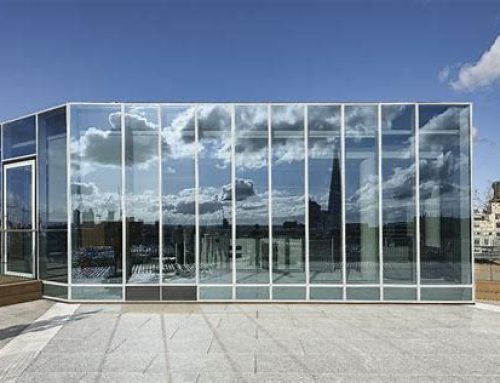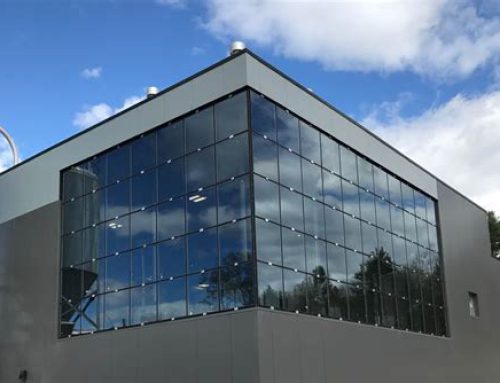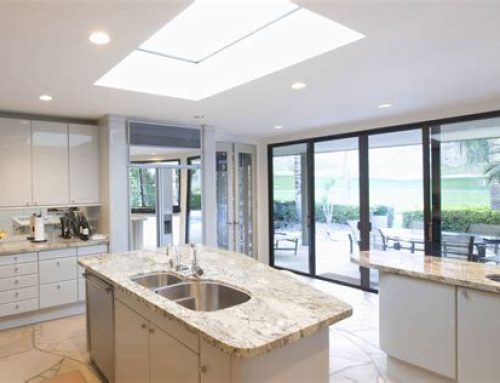Exterior glass wall installation

Exterior glass wall installation ,In the realm of modern architecture, the integration of glass has become synonymous with sophistication, innovation, and functionality. One of the most striking applications of this versatile material is in exterior glass walls. Whether adorning commercial skyscrapers or residential properties, exterior glass walls redefine spatial boundaries, inviting natural light to permeate interiors while offering panoramic views of the surrounding environment.
The Evolution of Exterior Glass Walls
The concept of exterior glass walls traces back to the mid-20th century, gaining momentum with the emergence of structural engineering advancements and the availability of tempered glass. Since then, technological breakthroughs have revolutionized the construction industry, allowing architects to push the boundaries of design with larger, more transparent facades.
Advantages of Exterior Glass Walls
Natural Light and Energy Efficiency:
- Exterior glass walls harness natural light, reducing the need for artificial lighting during daylight hours.
- Properly insulated glass panels contribute to improved energy efficiency by minimizing heat loss and gain, thus reducing reliance on heating and cooling systems.
Seamless Integration with Surroundings:
- Glass walls dissolve the barriers between indoor and outdoor spaces, creating a seamless transition and fostering a sense of connection with nature.
- The reflective properties of glass can mirror the surrounding landscape, integrating the structure harmoniously into its environment.
Architectural Versatility and Aesthetic Appeal:
- From sleek, minimalist designs to bold, statement-making structures, glass walls offer unparalleled design flexibility, enabling architects to realize their creative visions.
- The transparency of glass amplifies the visual appeal of buildings, imparting a sense of openness and grandeur.
Installation Process
Site Assessment and Design:
- Prior to installation, a comprehensive site assessment is conducted to evaluate factors such as climate, wind loads, and structural integrity.
- Architects collaborate closely with structural engineers to develop detailed design plans that address safety, functionality, and aesthetic considerations.
Selection of Glass and Framing Systems:
- Various types of glass, including laminated, tempered, and insulated, are available to suit specific project requirements.
- Framing systems, such as aluminum or steel, are chosen based on factors like durability, aesthetics, and thermal performance.
Installation and Assembly:
- Installation begins with the erection of a supporting structure, followed by the precise placement of glass panels using specialized lifting equipment.
- Weatherproof seals and gaskets are applied to ensure watertightness and thermal insulation.
- Attention to detail is paramount during assembly to guarantee structural integrity and seamless integration with surrounding elements.
Maintenance and Care
Regular Inspections:
- Periodic inspections are essential to identify any signs of damage, deterioration, or air leakage.
- Inspectors assess the condition of seals, framing, and glass panels, addressing any issues promptly to prevent further damage.
Cleaning and Maintenance:
- Routine cleaning helps preserve the aesthetic appeal of exterior glass walls and prevents the buildup of dirt, debris, and water stains.
- Specialized cleaning solutions and equipment may be employed to ensure thorough cleaning without damaging the glass or framing materials.
Challenges and Considerations
Structural Integrity:
- Glass walls must withstand various forces, including wind loads, seismic activity, and thermal expansion, necessitating robust structural support systems.
- Engineers employ advanced modeling and simulation techniques to analyze the structural performance of glass panels under different conditions.
Thermal Performance:
- Effective thermal insulation is crucial to mitigate heat transfer and maintain comfortable indoor temperatures throughout the year.
- Low-emissivity coatings and insulated glass units help optimize thermal performance while minimizing energy consumption.
Safety and Security:
- Ensuring the safety of occupants is paramount, requiring adherence to stringent building codes and standards governing glass wall construction.
- Impact-resistant glass and laminated interlayers enhance structural integrity and mitigate the risk of breakage or intrusion.
Maintenance Challenges:
- Exterior glass walls are exposed to environmental elements, requiring regular maintenance to preserve their appearance and functionality.
- Accessing high-rise facades for cleaning and maintenance may pose logistical challenges, necessitating specialized equipment and trained personnel.
Future Trends and Innovations
Smart Glass Technology:
- Advancements in smart glass technology enable dynamic control of transparency, allowing occupants to adjust privacy levels and daylight penetration.
- Electrochromic and thermochromic glass systems offer energy-efficient solutions for optimizing natural light and reducing solar heat gain.
Sustainable Practices:
- Architects increasingly prioritize sustainability in glass wall design, integrating features such as photovoltaic glazing and passive solar strategies to minimize environmental impact.
- Recycled materials and low-impact manufacturing processes further enhance the sustainability profile of glass wall systems.
Biophilic Design Integration:
- Incorporating biophilic design principles, glass walls can facilitate a deeper connection with nature, incorporating elements such as greenery, natural materials, and views of outdoor landscapes.
- Biophilic interventions enhance occupant well-being, productivity, and overall satisfaction with the built environment.
Regulatory Compliance and Permitting
Building Codes and Standards:
- Compliance with local building codes and industry standards is essential to ensure the structural integrity and safety of exterior glass walls.
- Codes may govern aspects such as wind resistance, seismic design, glass thickness, and impact resistance.
Permitting and Approvals:
- Obtaining necessary permits and approvals from regulatory authorities is a critical step in the installation process.
- Project stakeholders must navigate regulatory requirements, submitting comprehensive documentation and engineering analyses to secure permits for glass wall construction.
Cost Considerations
Material Costs:
- The cost of materials, including glass panels, framing systems, seals, and insulation, constitutes a significant portion of the overall project budget.
- Factors such as glass type, size, thickness, and coating options influence material costs.
Labor and Installation:
- Skilled labor and specialized equipment are required for the precise installation of exterior glass walls.
- Labor costs may vary based on project complexity, site conditions, and accessibility.
Maintenance and Lifecycle Costs:
- Long-term maintenance and lifecycle costs should be factored into project budgets.
- Proactive maintenance practices can help extend the lifespan of glass wall systems and minimize repair expenses over time.
Project Management and Collaboration
Integrated Design Approach:
- Successful execution of exterior glass wall projects necessitates close collaboration among architects, engineers, contractors, and glass manufacturers.
- Integrated design approaches foster synergy between disciplines, ensuring seamless coordination throughout the design, fabrication, and installation phases.
Project Scheduling and Coordination:
- Effective project management entails meticulous scheduling and coordination of activities to optimize workflow and minimize delays.
- Clear communication channels and regular progress updates are essential for keeping all stakeholders informed and aligned.
Conclusion
In conclusion, the installation of exterior glass walls represents a harmonious blend of artistry, engineering prowess, and meticulous planning. From concept to completion, each phase of the process demands careful attention to detail, adherence to regulatory requirements, and collaboration among multidisciplinary teams. While challenges such as structural integrity, thermal performance, and regulatory compliance must be navigated, the transformative impact of glass walls on architectural aesthetics, functionality, and sustainability is undeniable. As the architectural landscape continues to evolve, exterior glass walls will undoubtedly remain a symbol of innovation, elegance, and timeless allure, shaping skylines and inspiring admiration for generations to come, Exterior glass wall installation .





Leave A Comment